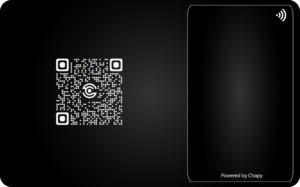Introduction to NFC Cards

NFC (Near Field Communication) cards are a type of contactless smart card that allows for quick and secure data transfer between devices. They operate on the principle of electromagnetic induction, enabling communication between two devices when they are brought close together, typically within a few centimeters.
How NFC Cards Work
NFC cards consist of an integrated circuit (IC) and an antenna. The IC stores and processes data, while the antenna enables communication with other NFC-enabled devices. When an NFC card is placed near a compatible device, such as a smartphone or a payment terminal, a wireless connection is established, and data can be transferred between the two devices.
NFC technology operates in two modes: active and passive. In active mode, both devices involved in the communication process generate their own electromagnetic fields. In passive mode, one device generates an electromagnetic field, while the other responds. This versatility makes NFC suitable for a wide range of applications.
NFC cards can be used for various applications, including:
- Contactless Payments
- Access Control
- Transportation Ticketing
- Data Exchange Between Devices
Benefits of NFC Cards
NFC cards offer a host of benefits that have made them increasingly popular in recent years:
- Convenience: NFC cards offer a convenient way to make payments or access services without the need to carry physical cards or cash. Users can simply tap their NFC-enabled card on a payment terminal or an access control reader to complete a transaction or gain entry.
- Speed: NFC technology enables fast data transfer, allowing for quick transactions and seamless user experiences. With just a tap, users can complete a payment or exchange information within seconds.
- Security: NFC cards use encryption algorithms to protect data during transmission, ensuring secure and reliable communication. This makes them suitable for applications that require sensitive information, such as payment transactions. The encryption ensures that sensitive data, like credit card numbers, remains secure during transactions.
- Versatility: NFC cards can be used for a wide range of applications, making them versatile and adaptable to various industries. They can be used for contactless payments, public transportation ticketing, loyalty programs, and more. The flexibility of NFC technology makes it easy for businesses to implement across a wide range of applications, enhancing the user experience.
- Interoperability: NFC technology is widely supported by smartphones and other devices, making NFC cards compatible with a large number of devices. This ensures broad acceptance and ease of use for consumers. Whether you have an Android or iOS device, you can expect NFC compatibility. The ubiquity of this technology further drives its adoption and use.
Future Trends in NFC Cards
As technology continues to advance, NFC cards are expected to play an increasingly important role in our daily lives. Future trends in NFC technology include:
- Wider Adoption in Smartphones: With more smartphones featuring built-in NFC capabilities, we can anticipate greater use of NFC cards for various purposes, including mobile payments, ticketing, and data sharing.
- Enhanced Security Features: As the need for secure transactions continues to grow, NFC technology will likely incorporate even more advanced security features, such as biometric authentication, to ensure user data is protected.
- Integration in IoT: NFC is expected to become a crucial component of the Internet of Things (IoT) ecosystem. It will enable seamless connections between smart devices in homes, offices, and industrial settings.
- Expansion in Healthcare: NFC’s secure and efficient data transfer capabilities will play a pivotal role in healthcare applications, from patient record management to the transfer of vital health data.
As we look toward the future, NFC cards are set to become even more integrated into our daily routines, making transactions and interactions more convenient, secure, and efficient.

